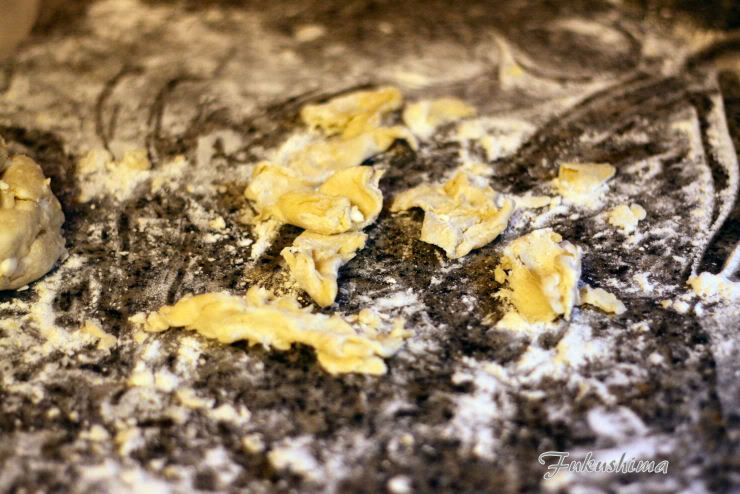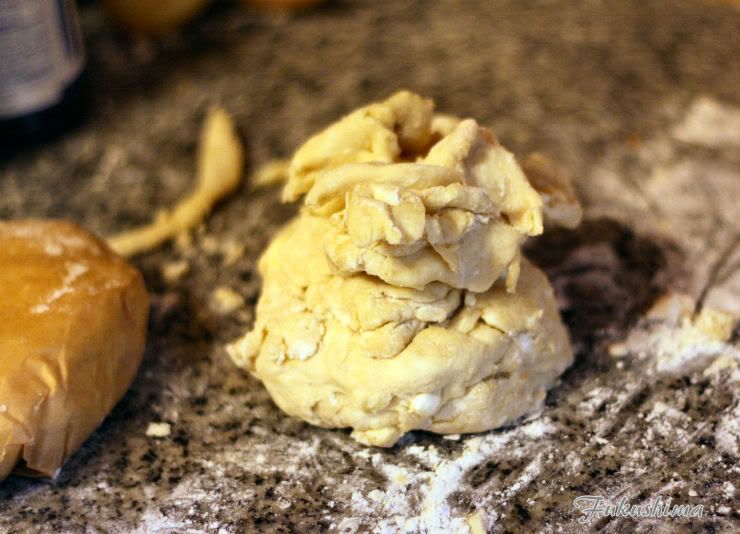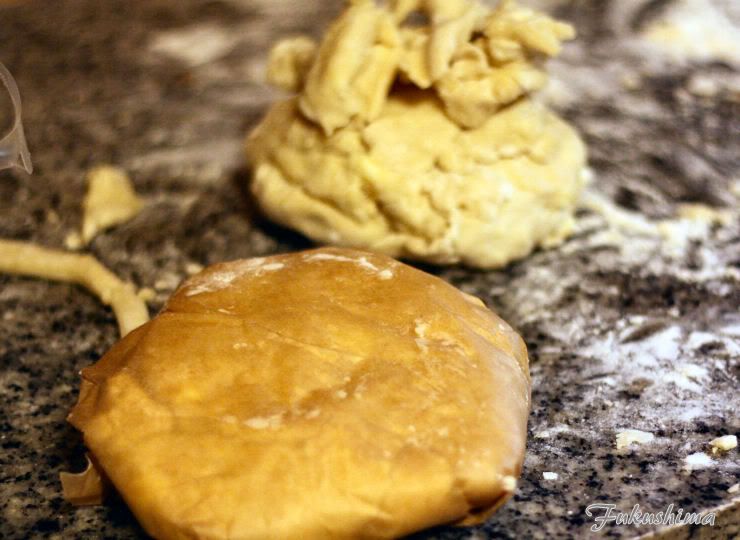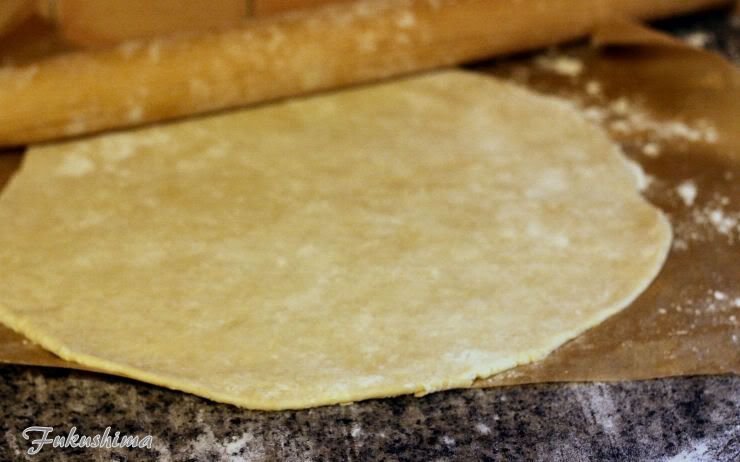Grandpa Sahara's pie crust:
12 cups AP flour
6 cups shortening (I use 3 cups each butter and shortening)
1/2 tablespoon fine salt (I use sea salt)
8 tablespoons sugar (I use fine organic unbleached sugar)
2 cups iced water (this measurement is wrong, by the way)
1. Cut shortening into small pieces, I actually like to use my hands and pinch it into flakes.
2. Place shortening in freezer to cool for 30 minutes to an hour.
3. Blend dry ingredients, I use a ballon whisk to make sure it blends thoroughly.
4, Pinch in the shortening into the flour. I use two spatulas to cut it in initially, then pinch the granular mix to create the final mixture. It needs to remain cold. Chilling everything, including tools, helps a lot. I am going for an appearance of fine gravel with some coarse sand texture.
5. Start adding small amount of water, folding or stirring with a silicon or wetted wood spoon. Eventually, there will be some gluten that develops, fear not, get it all moistened until it will form a crumbly ball. It should not hold to a ball shape.
Note: It often takes more than two cups, sometimes more than three cups. It matters how old your flour is, how dry it is, how much moisture is in the air etc... I chill three cups of water, add one cup to begin with drizzled over the entire mixture then add 1/4 cup at a time until I get the gravel appearance I want. Oh, I don't always do this in a bowl. If you have a large stone or concrete counter, it is a better surface.
I know divide the dough into 6 to 8 pieces, form them into disks using a sheet of plastic wrap for each piece, a flattened disk works best. If the dough seems dry, a spritz of water is not a bad idea. Wrap tightly, I double wrap. Then into the refrigerator for at least 2 hours. I then use a technique called 'frisage' to create large flakes of dough, which I then laminate back into a single dough disk, by combining, compressing back into disk form and back into parchment paper and into the fridge for several more hours, This creates streaks or layers of fat and flour, leading to a more flaky crust.
Frisage Flakes
Pre-compression
Wrapped for long rest
I prefer rolling dough out on a floured rolling cloth, I had to use baking parchment this year, as I ruined my cloth by using it to strain hash browns and it never got clean again. A little sprinkle of flour onto the cloth, onto the dough disk and onto the rolling pin. Roll, rotate, roll, rotate, you get a round circle for the pan.
Rolled and ready
Here is the reason I like the underlayment of a cloth of parchment paper, I can slide the pin under the underlayment and pick the dough up easily, it then drapes over the pie plate or filled pie shell easily. Actually, when I really get it right with this dough, I can handle it like pizza dough almost. I doubt you can see it in this photo, but, there are actual flakes of shortening visible in the rolled dough. In the following photo, you can see the drape and elasticity of the dough much better.Dough in place
This post had gotten a tad long, but, this really makes a great forgiving dough, a flaky and tender crust and that is, for me, what pies are all about.






There are better pies
ReplyDelete